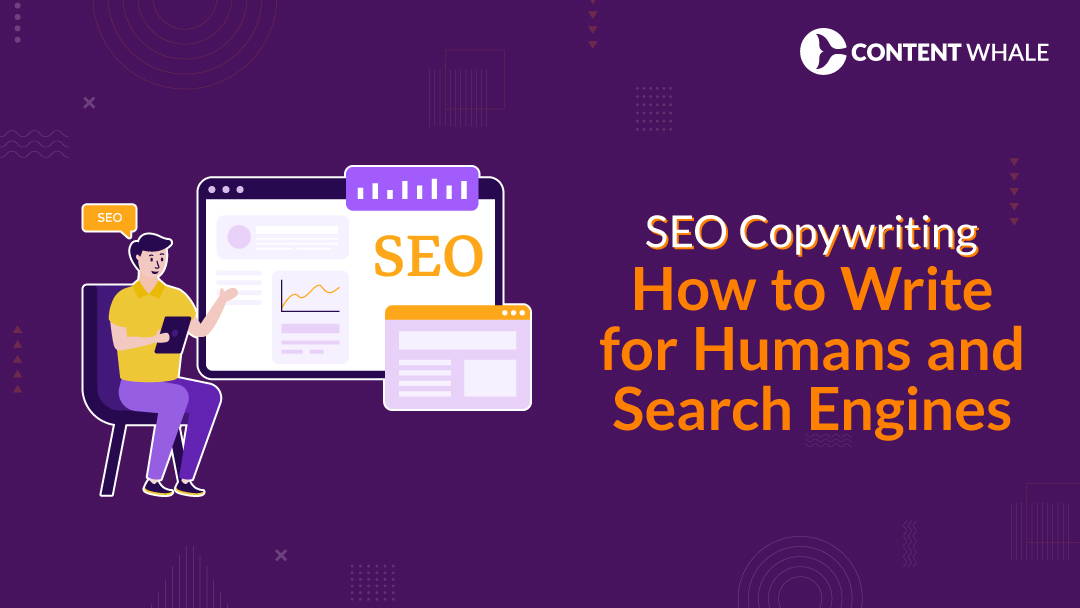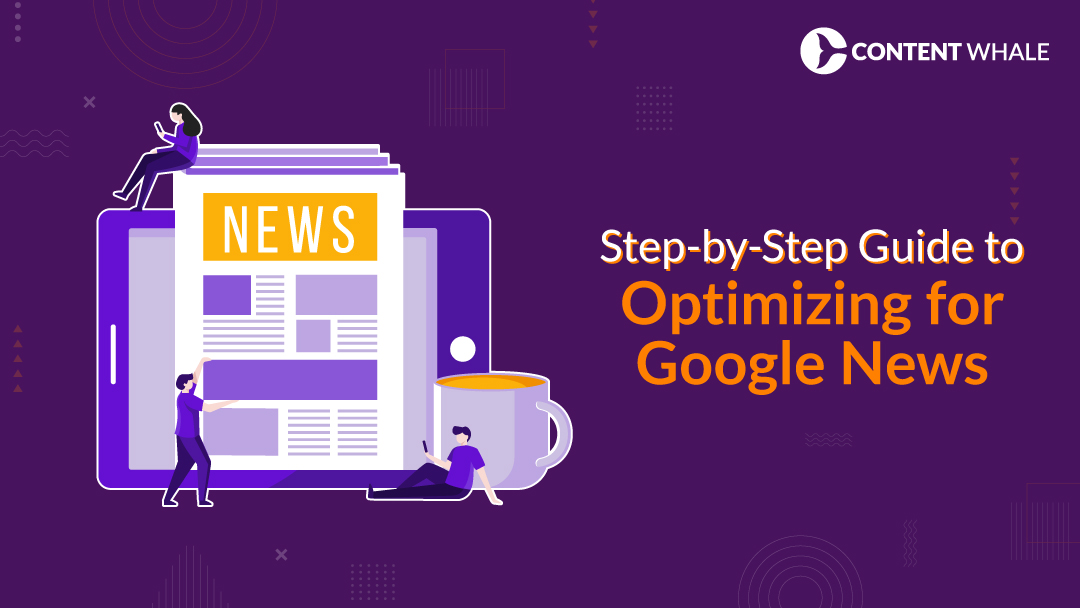Creating content that converts is essential for any business looking to drive specific actions from its audience. Conversion content is crafted with the primary goal of turning readers into customers or leads. It differs from general content in that it focuses on encouraging specific behaviors, such as making a purchase or signing up for a newsletter.
The importance of creating content that converts cannot be overstated. High-quality conversion content can significantly boost your business’s return on investment (ROI). By understanding what motivates your audience and crafting messages that resonate, you can turn casual readers into loyal customers. This guide will cover the key strategies and tips for content marketing that converts, ensuring you understand the elements that make content effective.
We’ll delve into the core components of high-converting content, from compelling headlines to clear calls to action. We’ll also explore real-world conversion content examples that illustrate these principles in action. Whether you’re a seasoned marketer or just starting out, this guide will provide valuable insights and practical advice for creating content that converts effectively. Prepare to enhance your content strategy and see tangible results from your marketing efforts.
Understanding Conversion Content
1. What is Conversion Content?
Conversion content refers to any content specifically designed to prompt readers to take a desired action. This action could be making a purchase, signing up for a newsletter, or filling out a contact form. The goal is to guide the audience towards a specific outcome.
2. Differences Between General and Conversion Content
Conversion content differs from general content in its intent and structure. General content aims to inform or entertain. Conversion content is strategically crafted to drive specific actions. It uses persuasive language, strong calls-to-action (CTAs), and often includes elements like testimonials and social proof to build trust and encourage conversions.
3. Key Metrics for Measuring Conversions
Focus on key metrics like conversion rate, click-through rate (CTR), and bounce rate to measure the effectiveness of high-converting content.
- Conversion Rate: Indicates the percentage of users who complete the desired action out of the total visitors.
- Click-Through Rate (CTR): This measures how often users click on a link within your content, showing the effectiveness of your CTAs.
- Bounce Rate: Reflects the percentage of visitors who leave your site after viewing only one page, indicating how engaging your content is.
Elements of High Converting Content
1. Strong Headlines and Compelling Introductions
Effective conversion content starts with a strong headline. A good headline grabs attention and makes a promise to the reader. It should be clear and engaging, setting the tone for the rest of the content. Compelling introductions are equally important. They should hook the reader immediately, making them want to continue reading.
2. Clear and Concise Messaging
Creating content that converts requires clear and concise messaging. Avoid jargon and complex sentences. Instead, use simple language that is easy to understand. Each paragraph should convey a single idea, making the content digestible. This approach keeps readers engaged and reduces the likelihood of them leaving the page prematurely.
3. Use of Visuals and Multimedia
Visuals play a crucial role in high-converting content. Images, infographics, and videos can enhance the message and make the content more engaging. Multimedia elements help break up the text and keep the reader’s attention. They also aid in explaining complex ideas more effectively.
4. Incorporating Social Proof and Testimonials
Social proof is a powerful tool in content marketing that converts. Including customer testimonials, reviews, and case studies can build trust with your audience. Real-world conversion content examples demonstrate the value of your product or service and can persuade potential customers to take action.
5. Clear Calls-to-Action (CTAs)
CTAs are a vital component of conversion content. They guide the reader towards the desired action, whether it’s making a purchase, signing up for a newsletter, or downloading a resource. Effective CTAs are clear, concise, and compelling. They should stand out visually and be strategically placed throughout the content.
6. Optimizing for Search Engines
SEO is essential for creating content that converts. Use relevant keywords naturally within your content. Optimize meta descriptions, headings, and alt text for images. This helps improve your content’s visibility on search engines, driving more traffic to your site and increasing the chances of conversions.
7. Consistent Brand Voice and Tone
Maintaining a consistent brand voice and tone helps build trust and recognition. Your content should reflect your brand’s personality and values, creating a cohesive experience for your audience. Consistency in voice and tone across all content types enhances credibility and fosters a deeper connection with your audience.
In summary, creating content that converts involves a combination of strong headlines, clear messaging, engaging visuals, social proof, and compelling CTAs. By incorporating these elements, you can enhance the effectiveness of your conversion content and achieve better results from your marketing efforts.
Strategies for Content Marketing That Converts
1. Identifying Your Target Audience
Understanding your audience is the first step in creating content that converts. Knowing their demographics, interests, and pain points allows you to tailor your message effectively. Use tools like Google Analytics and social media insights to gather data about your audience. This helps in crafting conversion content that resonates and meets their needs.
2. Creating Buyer Personas
Buyer personas are detailed profiles of your ideal customers. They include information like age, job title, challenges, and goals. Creating buyer personas helps you understand what type of content will appeal to different segments of your audience. This is a crucial step in content marketing that converts.
3. Mapping Content to the Buyer’s Journey
Each stage of the buyer’s journey requires different types of content. To attract attention in the awareness stage, use blog posts and infographics. In the consideration stage, offer detailed guides and webinars. In the decision stage, use case studies and testimonials. Mapping your content ensures you provide value at each step, leading to high-converting content.
4. Utilizing A/B Testing to Refine Content
A/B testing involves creating two versions of a piece of content and seeing which performs better. Test elements like headlines, CTAs, and images. This helps you understand what works best and refine your strategy. A/B testing is essential for creating content that converts by optimizing each element for maximum impact.
5. Leveraging Email Marketing and Automation
Email marketing is a powerful tool for content marketing that converts. Use automation to send personalized emails based on user behavior. Segment your audience and tailor your messages to their interests and actions. Automated email campaigns can nurture leads and drive conversions effectively.
6. Implementing SEO Best Practices
SEO is vital for high-converting content. Use keyword research to find terms your audience is searching for. Incorporate these keywords naturally into your content. Optimize meta descriptions, headings, and image alt texts. This increases your visibility on search engines, driving more organic traffic to your site.
7. Engaging with Interactive Content
Interactive content like quizzes, polls, and surveys can boost engagement and conversions. These tools make your content more engaging and provide valuable insights into your audience’s preferences. Interactive elements can enhance conversion content by keeping users engaged and encouraging them to take action.
By applying these strategies, you can master creating content that converts. Identifying your audience, creating targeted personas, and mapping content to the buyer’s journey is fundamental. Using A/B testing, email marketing, and SEO best practices further enhances your ability to create effective conversion content examples that drive results.
Examples of Effective Conversion Content
1. Case Studies and Success Stories
Case studies are powerful conversion content examples. They showcase real-world results achieved by your product or service. A well-crafted case study highlights the problem, solution, and results. This demonstrates your expertise and builds trust with potential customers. Success stories can convert hesitant prospects into loyal customers by providing tangible proof of your effectiveness.
BaseKit
BaseKit redesigned its pricing page to improve conversions. By adding color and improving the visual hierarchy, they made the pricing options clearer and more attractive. This simple change resulted in a 25% increase in conversions, demonstrating the impact of thoughtful design in high-converting content.
BONIA
BONIA, a luxury brand, faced conversion issues due to too many calls to action (CTAs) on its site. By simplifying its CTAs, it achieved a 218% increase in conversions and a 7.8% increase in revenue per visitor. This case study highlights the importance of clear, focused CTAs in creating content that converts.
2. Product Demos and Tutorials
Product demos and tutorials are essential for creating content that converts. Videos or step-by-step guides that show how to use your product help potential customers understand its benefits. These types of conversion content can address common questions and concerns, making it easier for prospects to make a purchasing decision.
3. Webinars and Live Sessions
Webinars and live sessions offer direct interaction with your audience. These events provide valuable information and allow for real-time Q&A. This interactive format builds trust and credibility. By addressing specific pain points and demonstrating your product’s value, webinars can significantly boost conversions. They are a key element in content marketing that converts.
4. Interactive Content (Quizzes, Polls)
Interactive content such as quizzes and polls engages users and provides personalized results. This type of high-converting content can increase user engagement and dwell time on your site. Quizzes and polls can also gather valuable data about your audience’s preferences and needs, which you can use to tailor future content and marketing efforts.
5. User-Generated Content and Reviews
User-generated content (UGC) and reviews are among the most influential conversion content examples. Positive reviews and testimonials from real customers build trust and credibility. Encourage your customers to share their experiences on social media and review sites. Displaying UGC on your website and marketing materials can significantly enhance your conversion content strategy.
6. Interactive Guides and Tools
Creating interactive guides and tools, such as calculators or configurators, can enhance user experience and drive conversions. These tools provide personalized insights or recommendations, making the content more valuable and actionable for the user. Interactive elements keep users engaged longer, increasing the likelihood of conversion.
By incorporating these conversion content examples into your strategy, you can effectively demonstrate the value of your offerings. Case studies, product demos, webinars, interactive content, and user-generated content are all proven methods for creating content that converts. These examples provide practical insights and build trust, which are crucial for successful content marketing that converts.
Best Practices for Creating Content That Converts
1. Consistent Brand Voice and Tone
Maintaining a consistent brand voice and tone is essential in creating content that converts. Your brand’s voice should reflect its personality and values. Consistency helps build recognition and trust with your audience. When your content maintains a consistent tone, it becomes more relatable and trustworthy.
2. Regular Content Audits and Updates
Performing regular content audits ensures your conversion content remains relevant and effective. Review your content periodically to update outdated information and optimize for better performance. This can involve refreshing old blog posts, updating CTAs, and ensuring all links are functional.
3. Data-Driven Content Creation
Utilize data and analytics to guide your content creation process. Analyzing metrics such as engagement rates, conversion rates, and user behavior provides insights into what works and what doesn’t. This data-driven approach helps in creating content that converts by focusing on strategies proven to be effective. Tools like Google Analytics and social media insights can be invaluable in this process.
4. Collaborating with Influencers and Industry Experts
Partnering with influencers and industry experts can enhance the credibility and reach of your content. Influencers can introduce your brand to a wider audience and lend their authority to your message. Industry experts can provide valuable insights and endorsements. Collaborations can lead to high-converting content by leveraging the trust and influence these figures have with their followers.
5. Incorporating User Feedback
Incorporate feedback from your audience to improve your conversion content. User feedback can provide insights into what your audience values and what areas need improvement. Use surveys, comments, and direct interactions to gather this information. Adapting your content based on user feedback can significantly enhance its effectiveness.
By following these best practices, you can master creating content that converts. Consistent branding, regular updates, data-driven strategies, influencer collaborations, and user feedback are all vital components. These practices ensure your content marketing remains effective and continuously improves over time.
Conclusion
Creating content that converts involves a strategic approach focused on understanding your audience and crafting engaging messages. Throughout this guide, we’ve covered the key elements of high-converting content and provided practical conversion content examples to illustrate effective strategies.
Strong headlines and clear messaging are essential for capturing and maintaining reader attention. Incorporating visuals and social proof builds trust and engagement. Consistent branding and regular content audits ensure your content remains relevant and effective. Data-driven strategies and influencer collaborations can further enhance your conversion content.
To succeed in content marketing that converts, continuously test and refine your strategies. Pay attention to user feedback and stay updated with industry trends. Experiment with different content formats and analyze performance metrics to understand what resonates best with your audience.
Don’t be afraid to try new approaches and learn from the results. The digital space is dynamic, and adaptability is key to mastering how to create content that converts. Implement these strategies, track your progress, and adjust as needed. By staying proactive and responsive to your audience’s needs, you can achieve significant improvements in your conversion rates. By following these guidelines, you can create compelling and effective conversion content that drives tangible results for your business.
FAQs
What is conversion content?
Conversion content is designed to prompt readers to take specific actions, such as making a purchase or signing up for a newsletter. It focuses on engaging the audience and driving measurable outcomes. Effective conversion content uses persuasive language, strong calls-to-action, and elements like testimonials and social proof to build trust and encourage conversions.
How can I measure the effectiveness of my content?
Measure the effectiveness of high-converting content using key metrics like conversion rate, click-through rate (CTR), and bounce rate. The conversion rate indicates the percentage of visitors who complete the desired action. CTR shows how often users click on a link within your content. The bounce rate reflects the percentage of visitors who leave your site after viewing only one page. Tools like Google Analytics can help track these metrics.
What are some common mistakes to avoid in conversion content?
Avoid overly complex language and lack of clear calls to action. Ensure your conversion content is concise and to the point. Another common mistake is not understanding your audience’s needs, which can lead to irrelevant content that doesn’t resonate. Regularly update your content to keep it relevant and engaging.
How often should I update my content to ensure high conversions?
Regular updates are essential for maintaining content marketing that converts. Conduct content audits quarterly or biannually to refresh outdated information, optimize CTAs, and ensure all links are functional. Keeping your content current helps maintain its effectiveness and relevance.
Can social media help in creating content that converts?
Yes, social media can significantly enhance the creation of conversion-focused content. It helps drive traffic to your content, build trust through engagement, and provide valuable feedback. Sharing conversion content examples and user-generated content on social media can boost credibility and encourage conversions.
By understanding these key aspects and implementing best practices, you can create effective conversion content that drives meaningful results for your business.





